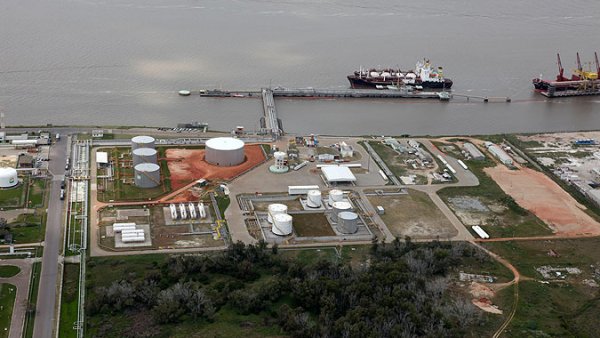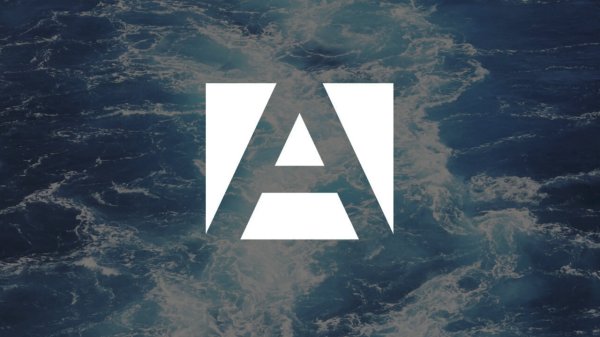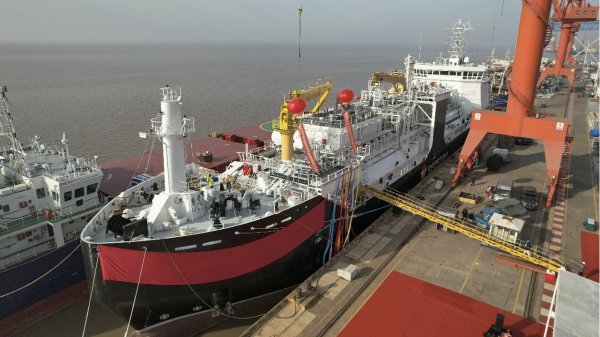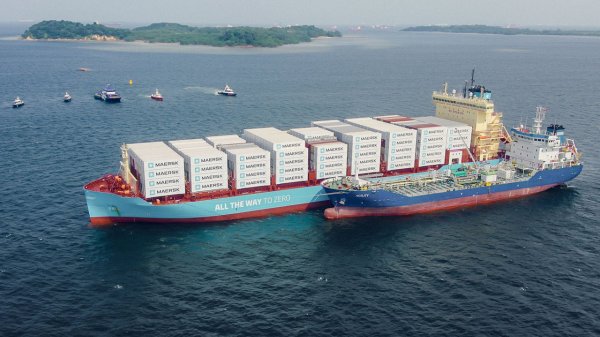Strict regs will put short-term compliance methods into the 'too hard' basket: Purio
LNG Marine Fuel Institute CEO sees vessel docking for conversion to LNG as a key challenge.
The CEO of the LNG Marine Fuel Institute (LMFI), Captain Walter Purio, says MARPOL Annex VI 2020 requirements and the establishment of strict SOx and NOx Tier III Emission Control Areas (ECAs) will put short-term compliance methods such as scrubbers, exhaust gas recirculation (EGR) and selective catalytic reduction (SCR) into the "'too hard' basket", given the international nature of the shipping business.
Whilst Purio concedes that renewables would be "the end game" for sustainable green energy, he sees LNG as a "transitional fuel" that would be capable of meeting the environmental and economical needs of maritime fleets.
In terms of the biggest challenges for ship owners to convert to LNG, Purio thinks the principal challenge will be to efficiently schedule and complete every vessel docking for conversion to LNG as quickly as possible so as to ensure that the ship is out of service for as little time as necessary.
Established in Australia, the LMFI is a non-governmental organisation set up to promote the safe and best-practice use of gas as a marine fuel in the Southern Hemisphere.
The LMFI aims to provide support, advocacy, training and consultation to businesses, governments and organisations regarding the use of LNG as a marine fuel across Australasia.
"Australia is blessed with significant natural iron ore and gas resources located in relatively close proximity to one another," Purio points out. "This geographic fact, coupled with Australia's need for increased energy security, improved balance of payments and obvious improved public health, are the main drivers for establishing the LNG Marine Fuel Institute."
In order to promote best-practice in the use of gas as a marine fuel, the LMFI has developed an initiative entitled 'Improve Energy Security in Australia'.
The LMFI is keen to ensure that Australia meets its energy security goals and that it is a first-mover in establishing ECAs to drive the adoption of LNG as a marine fuel in the Southern Hemisphere.
As previously reported, Australia's first LNG bunker operation was completed at the port of Dampier on January 23. The Siem Offshore-owned Siem Thiima was supplied with LNG during a truck-to-ship delivery carried out by EVOL LNG for vessel operator Woodside Energy - Australia's largest independent oil and gas company and a key LNG player in the country.
In February, Woodside Energy outlined the creation of a Burrup Peninsula 'hub' in the Pilbara region of Western Australia. The plan includes the development of facilities that would enable the distribution of LNG in the Pilbara region for use as a marine fuel.
Another project, the Green Corridor initiative, announced in January, is to assess the commercial potential of LNG-fuelled vessels in a 'green corridor' between Australian and China, culminating in the creation of a next-generation LNG-powered Capesize bulker.
Purio is scheduled to speak at the upcoming LNG Fuel Summit, which is due to be held in Amsterdam from June 13-15.
Whilst Purio concedes that renewables would be "the end game" for sustainable green energy, he sees LNG as a "transitional fuel" that would be capable of meeting the environmental and economical needs of maritime fleets.
In terms of the biggest challenges for ship owners to convert to LNG, Purio thinks the principal challenge will be to efficiently schedule and complete every vessel docking for conversion to LNG as quickly as possible so as to ensure that the ship is out of service for as little time as necessary.
Established in Australia, the LMFI is a non-governmental organisation set up to promote the safe and best-practice use of gas as a marine fuel in the Southern Hemisphere.
The LMFI aims to provide support, advocacy, training and consultation to businesses, governments and organisations regarding the use of LNG as a marine fuel across Australasia.
"Australia is blessed with significant natural iron ore and gas resources located in relatively close proximity to one another," Purio points out. "This geographic fact, coupled with Australia's need for increased energy security, improved balance of payments and obvious improved public health, are the main drivers for establishing the LNG Marine Fuel Institute."
In order to promote best-practice in the use of gas as a marine fuel, the LMFI has developed an initiative entitled 'Improve Energy Security in Australia'.
The LMFI is keen to ensure that Australia meets its energy security goals and that it is a first-mover in establishing ECAs to drive the adoption of LNG as a marine fuel in the Southern Hemisphere.
As previously reported, Australia's first LNG bunker operation was completed at the port of Dampier on January 23. The Siem Offshore-owned Siem Thiima was supplied with LNG during a truck-to-ship delivery carried out by EVOL LNG for vessel operator Woodside Energy - Australia's largest independent oil and gas company and a key LNG player in the country.
In February, Woodside Energy outlined the creation of a Burrup Peninsula 'hub' in the Pilbara region of Western Australia. The plan includes the development of facilities that would enable the distribution of LNG in the Pilbara region for use as a marine fuel.
Another project, the Green Corridor initiative, announced in January, is to assess the commercial potential of LNG-fuelled vessels in a 'green corridor' between Australian and China, culminating in the creation of a next-generation LNG-powered Capesize bulker.
Purio is scheduled to speak at the upcoming LNG Fuel Summit, which is due to be held in Amsterdam from June 13-15.

|
VARO Energy expands renewable portfolio with Preem acquisition
All-cash transaction expected to complete in the latter half of 2025. |
|
|
|
||

|
NYK trials biofuel in milestone coal carrier test
Vessel is used to test biofuel for domestic utility company. |
|
|
|
||

|
H-Line Shipping orders LNG bunkering vessel
Vessel with 18,000-cbm capacity to run on both LNG and MDO. |
|
|
|
||

|
How to engineer and manage green shipping fuels | Stanley George, VPS
Effective management strategies and insights for evolving fuel use. |
|
|
|
||

|
Swedish government bans scrubber wastewater discharges
Discharges from open-loop scrubbers to be prohibited in Swedish waters from July 2025. |
|
|
|
||

|
MAN Energy Solutions achieves 100% load milestone for ammonia engine
Latest tests validate fuel injection system throughout the entire load curve. |
|
|
|
||

|
Petrobras secures ISCC EU RED certification for B24 biofuel blend at Rio Grande
Blend consisting of 24% FAME is said to have been rigorously tested to meet international standards. |
|
|
|
||

|
Stolt-Nielsen to fully control Avenir LNG with acquisition
Share purchase agreement to buy all shares from Golar LNG and Aequitas. |
|
|
|
||

|
Bureau Veritas supports launch of CIMC SOE's LNG bunkering vessel
Handover of Seaspan Energy's cutting-edge 7,600-cbm vessel completed. |
|
|
|
||

|
Methanol as a marine fuel | Steve Bee, VPS
How environmental legislation has driven the development of low-sulphur fuels and methanol-ready ships. |
|
|
|
||
Related Links
- · Woodside plans LNG bunker hub in Pilbara [Insights]
- · First LNG bunker delivery completed in Fremantle [Insights]
- · Western Australia 'well placed' to support LNG-fuelled bulk trade [Insights]
- · Joint study to look into developing LNG-fuelled Capesize bulker [Insights]

